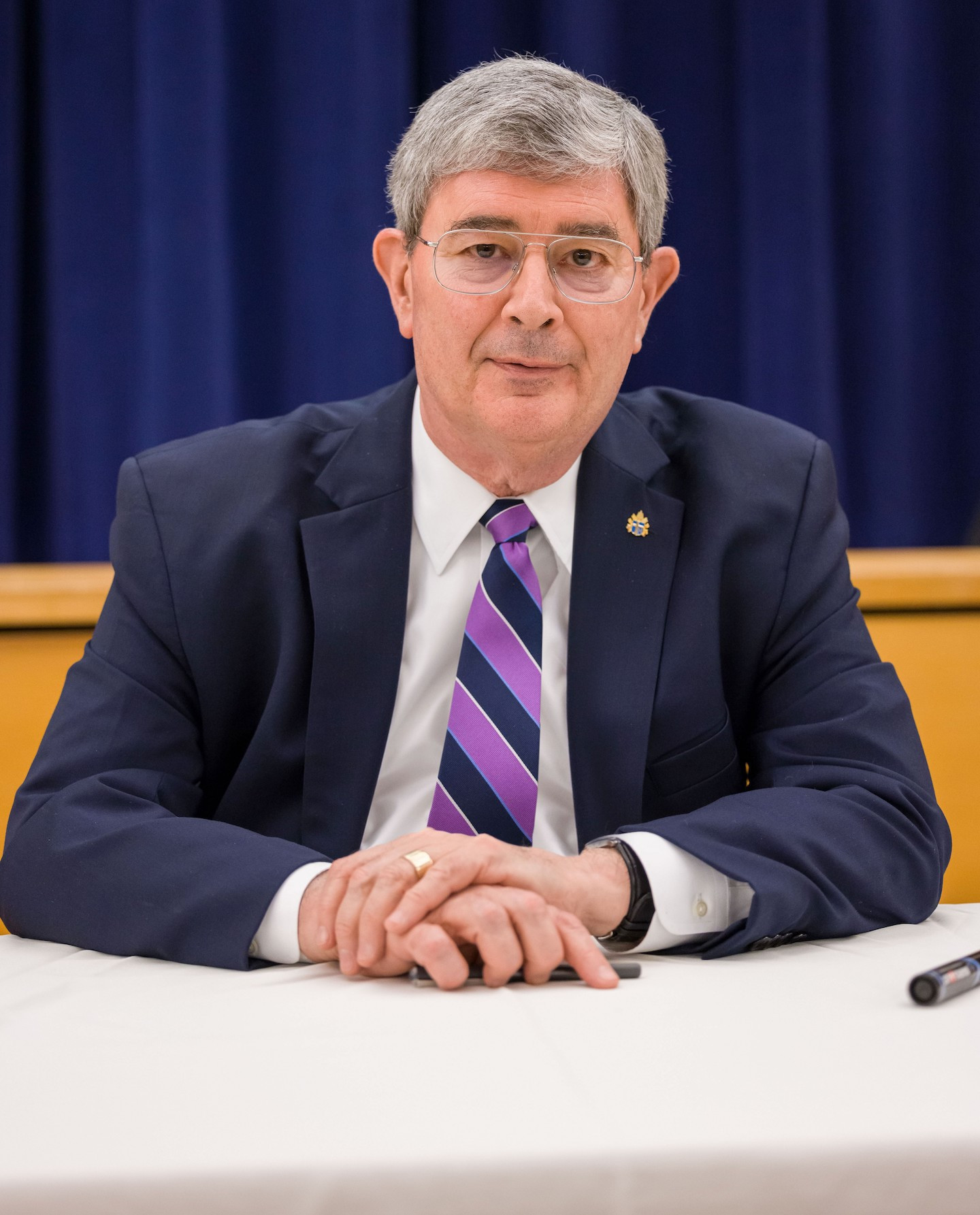Among the many urgent questions raised by the Synods on the Family in 2014 and 2015 and the current Synod on Synodality—questions that will inevitably bear on the next papal conclave—is that of unity: In what, precisely, does the unity of the Church consist? What is the content of the “one” in the Creed’s affirmation of “one, holy, catholic, and apostolic Church”?
The Synods on the Family grappled with this in their debates on worthiness to receive Holy Communion: Could those in canonically irregular marriages, who were not living in unity with the settled teaching and pastoral practice of the Church, participate fully in the sacrament of unity, the Eucharist? Or ought they refrain from receiving Holy Communion while still joining the community in offering true worship to the Father?
The ambiguities in Amoris Laetitia, the post-synodal apostolic exhortation that followed those Synods, did not resolve that question. Rather, it deepened the concern that fault lines were opening in the Church, with some local churches interpreting Amoris Laetitia according to the line they had taken at the Synods (i.e., those in irregular marriages could receive Holy Communion) and other local churches interpreting the apostolic exhortation differently (those in irregular marriages should refrain from receiving Holy Communion). Those fault lines were deep indeed. For how could it be that a source of sanctifying grace in Germany was a grave sin ten miles away, on the Polish side of the German-Polish border?
This, by the way, was a concern the Group of Thirteen Cardinals (now infamous in some circles) considered raising in their letter to the pope at the outset of Synod 2015. In that letter, the cardinals politely requested a revision of the Synod procedures so that there would be a more robust synodal debate, and a voting process in which the Synod fathers rendered their judgments on specific propositions. An early draft of that letter warned against the possibility of the Catholic Church coming to resemble the local-option Anglican Communion, in which some constituent national churches believed and practiced in one way, and other constituent churches believed and practiced the opposite: That, it was suggested, was the path to true schism. At the end, the cardinals decided to focus on synodal procedures only and this yellow caution flag was not included in the letter’s final text.
Yet the concern remained. And it has been intensified since, not least because of diverse reactions to the December 2023 declaration of the Dicastery for the Doctrine of the Faith on the possibility of blessing those in same-sex unions and relationships. The churches of Belgium and Germany applauded (and continued to do what they had already been doing) and the churches of Africa registered a firm “No, thank you.” These fault lines, and others, will help define the debate—and let us pray that it will be a real debate, not some ersatz and manipulated “Conversation in the Spirit”—at the Synod in October 2024.
The question of the content of the Church’s unity was clarified by Pope John Paul II during his first pastoral pilgrimage to the United States in October 1979. Prior to the pope’s visit, U.S.-based ecumenical dialogues had focused on core doctrinal issues, “bracketing” moral questions on which there was deep disagreement between Catholics and their Protestant dialogue partners. John Paul had a different view.
After greeting the ecumenical congregation gathered in the chapel of Washington’s Trinity College as “beloved Christian brethren and fellow disciples of the Lord Jesus,” the pope celebrated their common proclamation that “there is one Mediator between God and man, the man Christ Jesus [1 Tim. 2:5]” and noted with satisfaction their common love for “Sacred Scripture, which we recognize as the inspired word of God.” The pope also cited with regret “the deep division” between Christian communities “which still exists over moral and ethical matters.” And then, in one sentence, he shut down the ecumenical cafeteria: “The moral life and the life of faith are so deeply united that it is impossible to divide them.” Message: There can be no bracketing of moral issues in a genuine dialogue about recomposing Christian unity.
If that is true for ecumenism, it is certainly true for the unity of the Catholic Church. The content of the “one” in the Nicene affirmation of “one, holy, catholic, and apostolic Church” is a unity in faith: a unity in the truths we know from revelation and reason. Local-option Catholicism is not Catholicism. National Catholicism is not Catholicism. The truths of faith—which include the moral truths that facilitate human flourishing and beatitude—are universal.
Which is to say, catholic and Catholic.
George Weigel’s column “The Catholic Difference” is syndicated by the Denver Catholic, the official publication of the Archdiocese of Denver.

George Weigel is Distinguished Senior Fellow of Washington, D.C.’s Ethics and Public Policy Center, where he holds the William E. Simon Chair in Catholic Studies.
First Things depends on its subscribers and supporters. Join the conversation and make a contribution today.
Click here to make a donation.
Click here to subscribe to First Things.
Image by Lothar Wolleh, licensed via Creative Commons. Image cropped.




